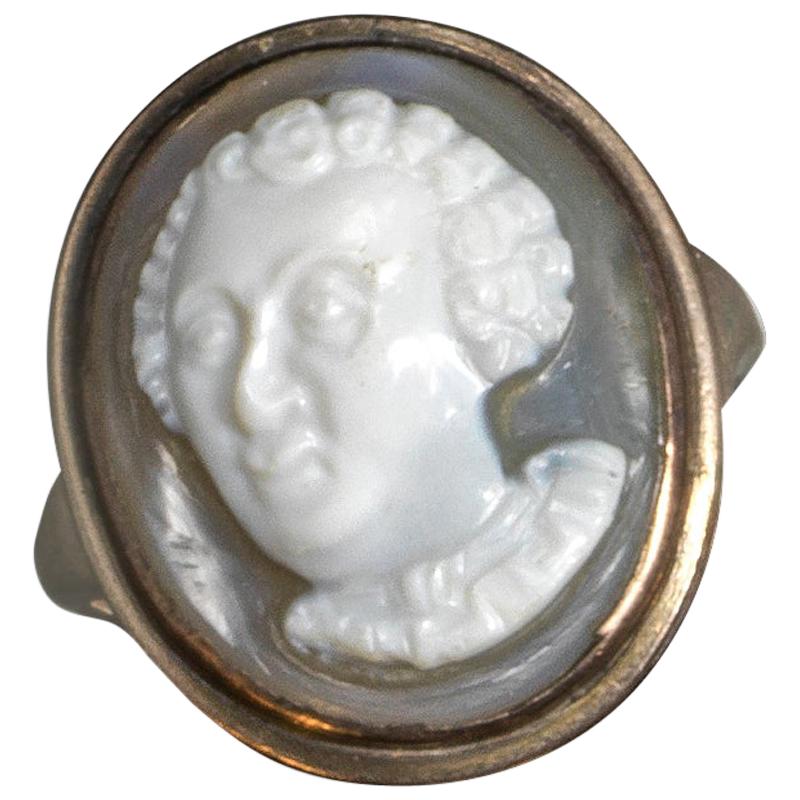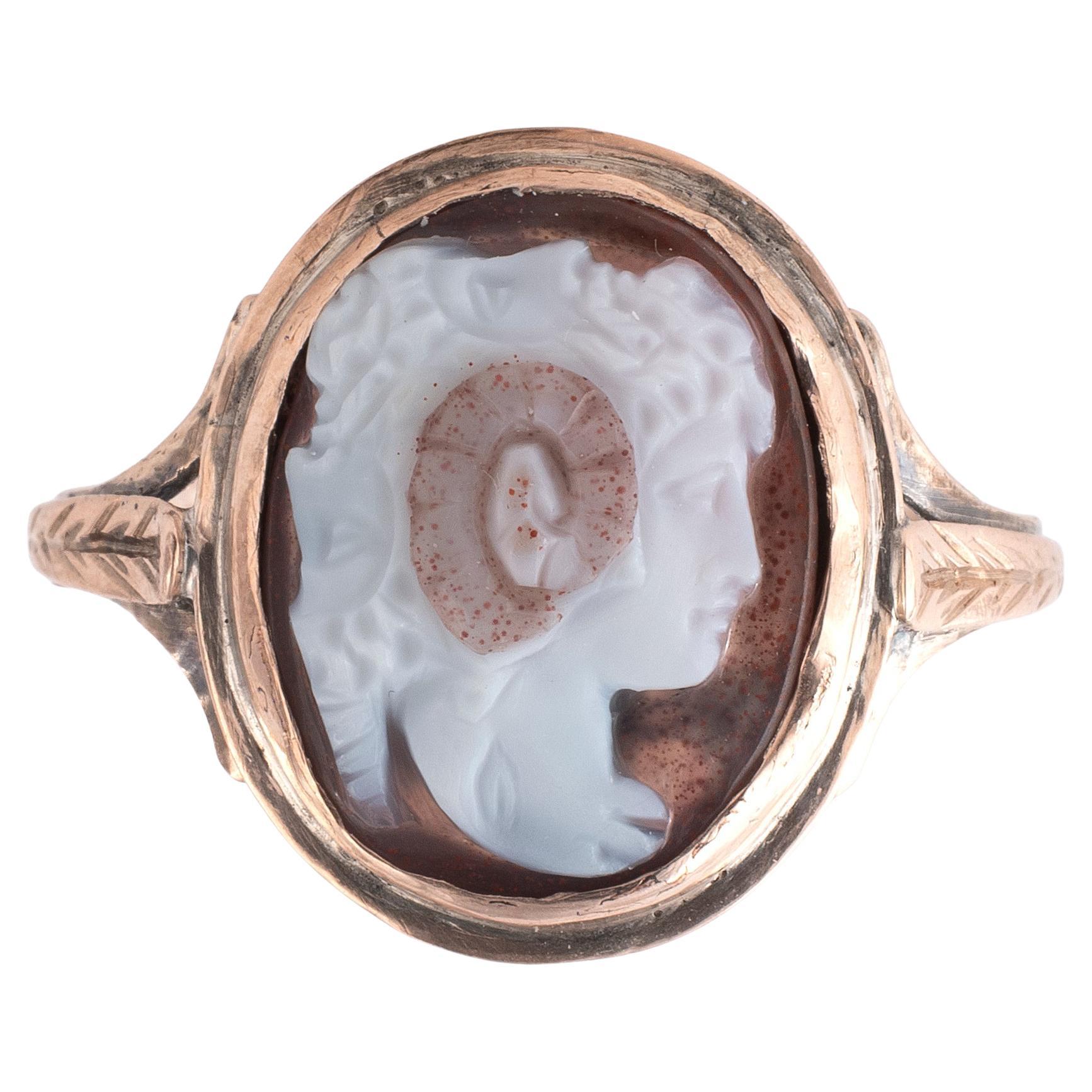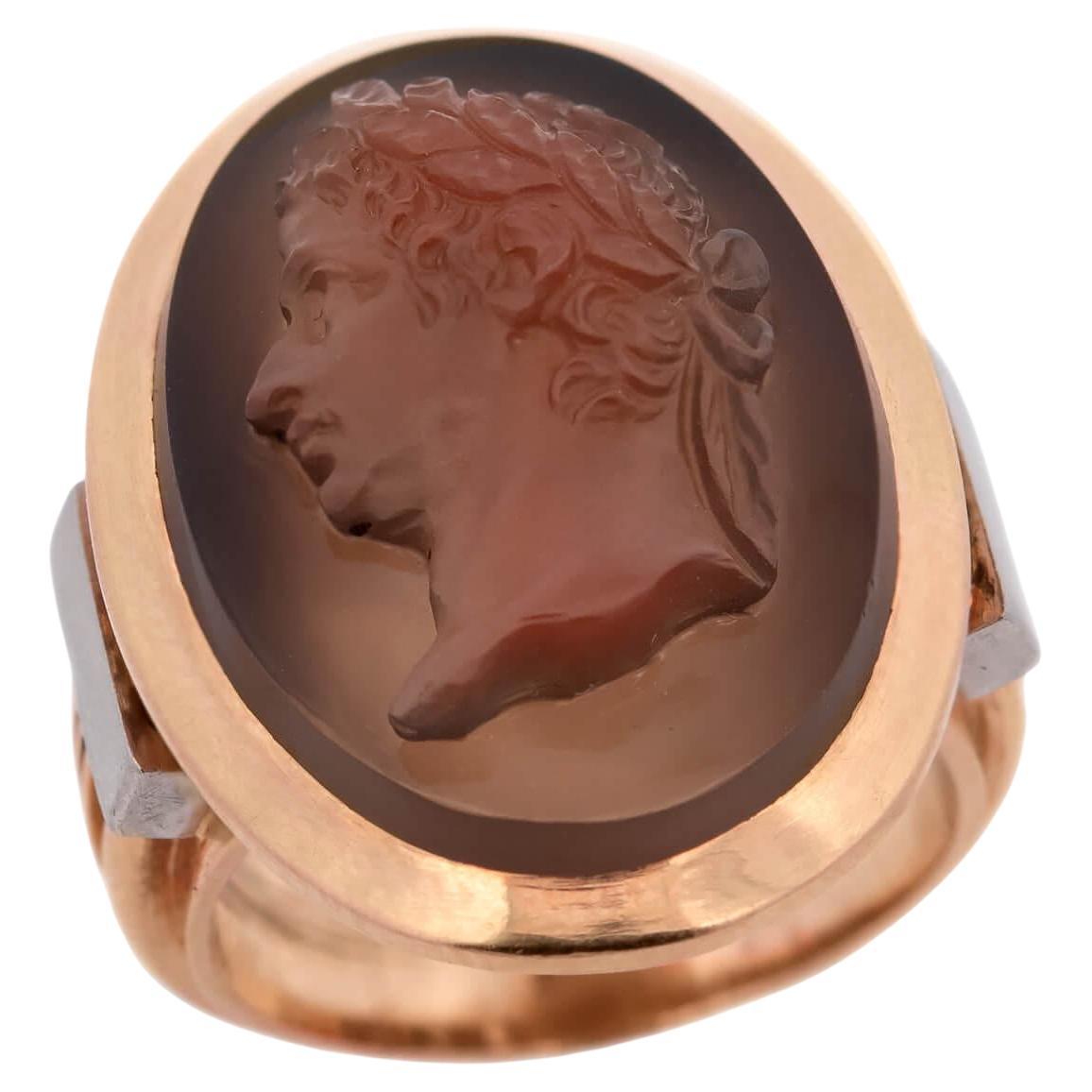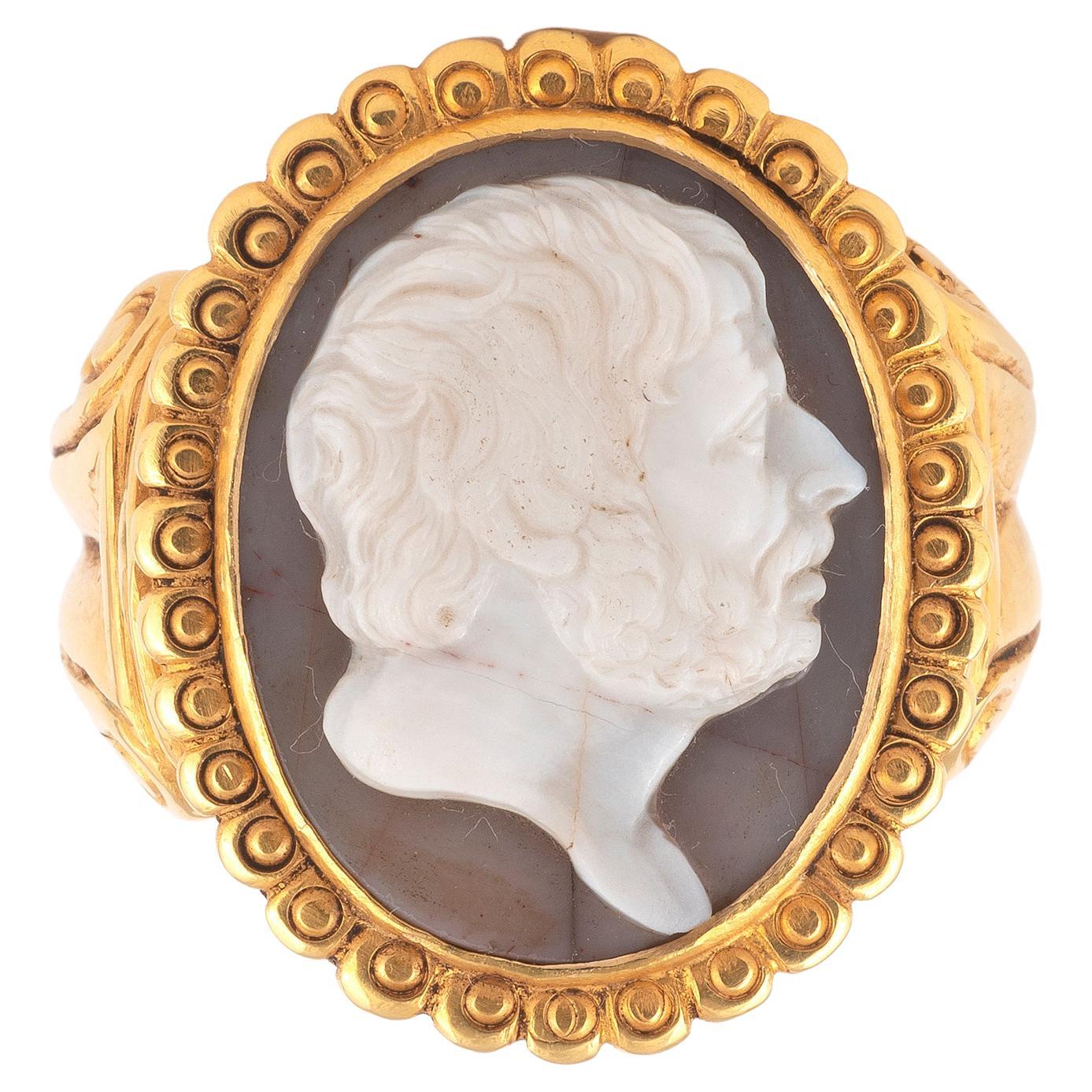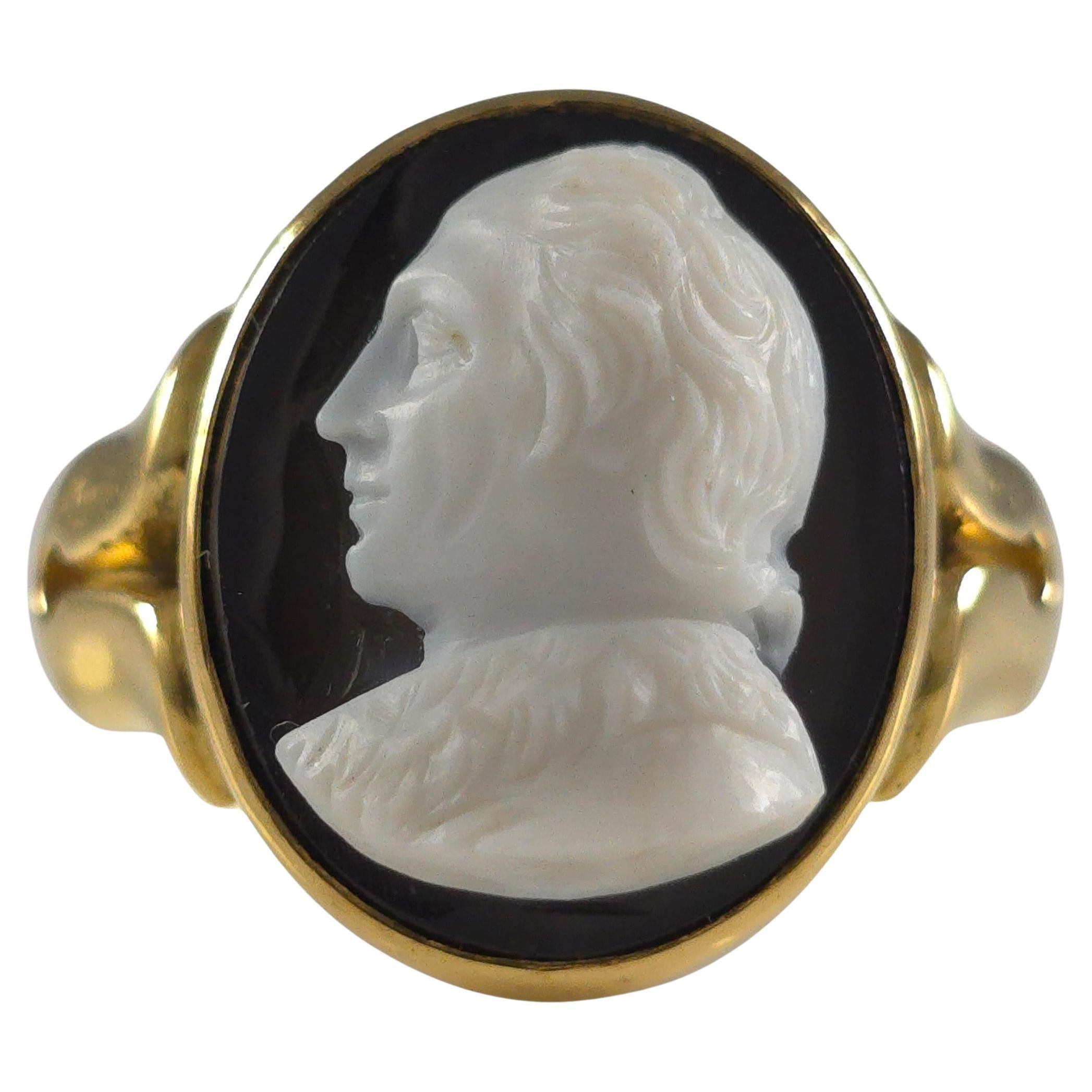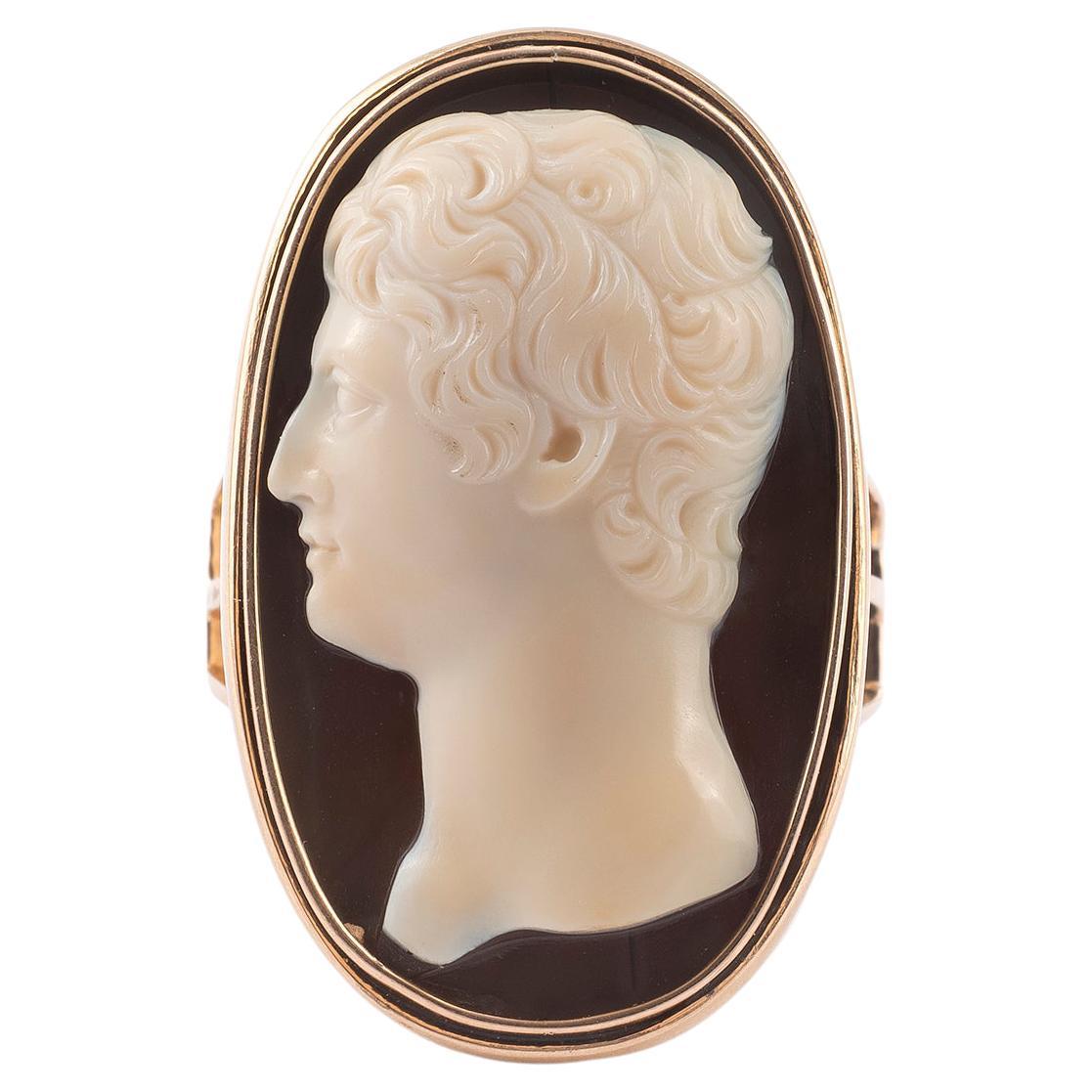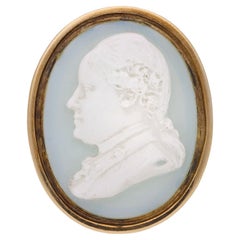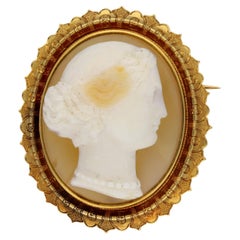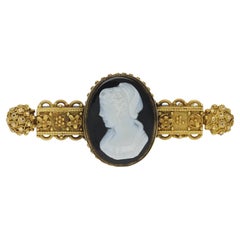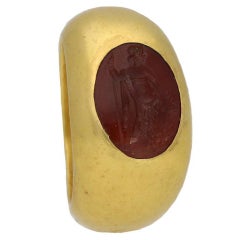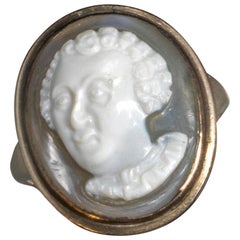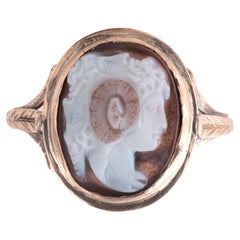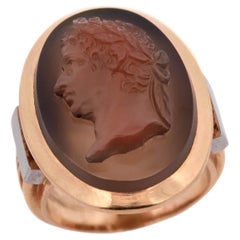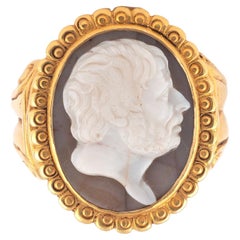Items Similar to Sardonyx cameo of John Milton mounted in English, circa 1901.
Video Loading
Want more images or videos?
Request additional images or videos from the seller
1 of 8
Sardonyx cameo of John Milton mounted in English, circa 1901.
$11,237.45
£8,200
€9,566.63
CA$15,392.50
A$17,119.82
CHF 8,939.44
MX$208,329.95
NOK 114,170.24
SEK 107,071.54
DKK 71,399.44
Shipping
Retrieving quote...The 1stDibs Promise:
Authenticity Guarantee,
Money-Back Guarantee,
24-Hour Cancellation
About the Item
Stuart sardonyx cameo of John Milton mounted in a Victorian gold ring. Set with an oval sardonyx 17th century cameo in a rubover setting featuring a profile bust of John Milton (1608-74), the eminent seventeenth century English poet, leading to integrated shoulders and flowing through to a tapering solid shank. Tested yellow gold, English, circa 1901.
- Ring Size:9.75 US, Resizable
- Metal:
- Period:
- Date of Manufacture:1901
- Condition:Wear consistent with age and use.
- Seller Location:London, GB
- Reference Number:Seller: 171721stDibs: LU18621426822
Resizing is available.
About the Seller
5.0
Recognized Seller
These prestigious sellers are industry leaders and represent the highest echelon for item quality and design.
1stDibs seller since 2011
65 sales on 1stDibs
Typical response time: 18 hours
- ShippingRetrieving quote...Shipping from: London, United Kingdom
- Return Policy
Authenticity Guarantee
In the unlikely event there’s an issue with an item’s authenticity, contact us within 1 year for a full refund. DetailsMoney-Back Guarantee
If your item is not as described, is damaged in transit, or does not arrive, contact us within 7 days for a full refund. Details24-Hour Cancellation
You have a 24-hour grace period in which to reconsider your purchase, with no questions asked.Vetted Professional Sellers
Our world-class sellers must adhere to strict standards for service and quality, maintaining the integrity of our listings.Price-Match Guarantee
If you find that a seller listed the same item for a lower price elsewhere, we’ll match it.Trusted Global Delivery
Our best-in-class carrier network provides specialized shipping options worldwide, including custom delivery.More From This Seller
View AllEarly hardstone cameo ring of King George III
Located in London, GB
Early hardstone cameo ring. Set with an oval hardstone carving of the bust of King George III in a Roman set setting, flanked by trumpeting shoulders and leading smoothly through to ...
Category
Antique 1760s Solitaire Rings
Materials
Yellow Gold
Victorian hardstone cameo brooch, French, circa 1900
Located in London, GB
Victorian hardstone cameo brooch. Set with an oval cameo in hardstone depicting the profile of a woman in the classical style, featuring a decorative engraved border and fitted to re...
Category
Antique Early 1900s European Victorian Brooches
Materials
Yellow Gold
Antique Cameo Brooch, circa 1850.
Located in London, GB
Hardstone cameo brooch. Set with a carved hardstone cameo to centre of a bust of a lady in profile within a yellow gold ornate horizontal form, with gold wirework, floral beading and...
Category
Antique 1850s Victorian Brooches
Materials
18k Gold
Ancient 2nd Century AD Roman Dionysus Carnelian Intaglio Gold Ring
Located in London, GB
Ancient Roman Dionysus intaglio ring. Set with an oval carnelian intaglio finely engraved with standing figure of Dionysus holding a thrysus and drinking cup, in a closed back rubove...
Category
Antique 15th Century and Earlier Unknown Signet Rings
Materials
Carnelian, Yellow Gold, Gold
Ancient Roman Cornelian Intaglio of Apollo circa 200 AD Ring, French, circa 1890
Located in London, GB
Ancient Roman cornelian intaglio of Apollo circa 200 AD ring. Set to centre with an orange cornelian intaglio of the Greco-Roman god Apollo, circa 200 AD, in a closed back Roman set ...
Category
Antique 1890s Unknown Early Victorian Signet Rings
Materials
Yellow Gold
$18,911
Free Shipping
Georgian crystal, garnet and enamel memorial ring, English, circa 1775.
Located in London, GB
Georgian crystal, garnet and enamel memorial ring. Set with a circular border of sixteen cushion shape old cut natural unenhanced garnets in closed back cut down settings with a comb...
Category
Antique 1770s Cluster Rings
Materials
Crystal, Garnet, Yellow Gold, Enamel
You May Also Like
Late Renaissance Agate Cameo Ring Alessandro de' Medici
Located in Firenze, IT
Cameo depicting Alessandro de' Medici, known as (IL Moro or 'The Moor'), c. 16th
century, in later gold ring mount, cameo 2.0cm high, ring size 7
Alessandro de’ Medici (22 July 151...
Category
Antique 16th Century Italian Renaissance Signet Rings
Materials
Agate, Gold
18th Century Agate Cameo Of A Gryllos
Located in Firenze, IT
The cameo depicts four conjoined heads that take the name of gryllos, which means the union of two or more heads of human and animal origin, often with mythological associations and ...
Category
Antique 1790s Italian George III Signet Rings
Materials
Agate, Gilt Metal
Victorian 18k Sardonyx Cameo Ring
Located in Narberth, PA
Sardonyx is a banded agate form of Chalcedony Quartz. Hard stone cameos are much more difficult to carve than shell which is a significantly softer material. Most shell cameos were c...
Category
Antique 1880s Victorian Engagement Rings
Materials
Gold, 18k Gold, White Gold, Yellow Gold
Hardstone Cameo of Seneca 18th-19th Century
Located in Firenze, IT
The portrait head of Seneca, in a later ring mount, ring size 11 , length 27mm, width mm22
Weight:26.4gr.
Category
Antique Late 18th Century Italian Neoclassical Signet Rings
Materials
18k Gold, Yellow Gold
Victorian 18ct Yellow Gold Onyx Cameo Ring, 1881
Located in Glasgow, GB
A Victorian oval onyx cameo ring set in 18ct yellow gold. The cameo, depicting the philosopher John Locke (1632-1704) is set in 18ct gold marked with Birmingham hallmarks, 1881.
• P...
Category
Antique 1880s British Classical Roman Signet Rings
Materials
Onyx, 18k Gold, Yellow Gold
Hardstone Cameo of a Man Ring 19th Century
Located in Firenze, IT
The portrait head, facing right, with short hair and clean shaven, in a later ring mount, ring size 8
length 29mm, width 16mm
Category
Antique 19th Century Italian Signet Rings
Materials
Agate, 18k Gold, Yellow Gold
More Ways To Browse
1960 Day Date Rolex
1969 Rolex Day Date
1980 Rolex President
1987 Rolex
1999 Rolex Oyster Perpetual
Art Deco Longines
Audemars Piguet Vintage Gold Watch
Breguet Watches 1930
Cartier 1910
Cartier Diamond Bracelet Art Deco
Chanel Diamond Watch
Chopard Watches Gold Bracelet
Elgin Gold Filled
Geneve Watch Diamonds
Gold Dagger Jewelry
Gold Daytona Rolex Bracelet
Mens Ring With Single Diamond
Oyster Perpetual Green
